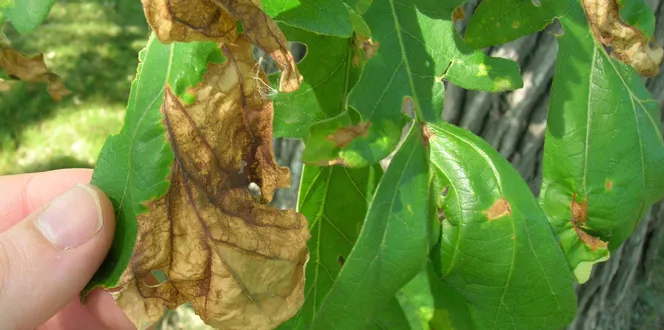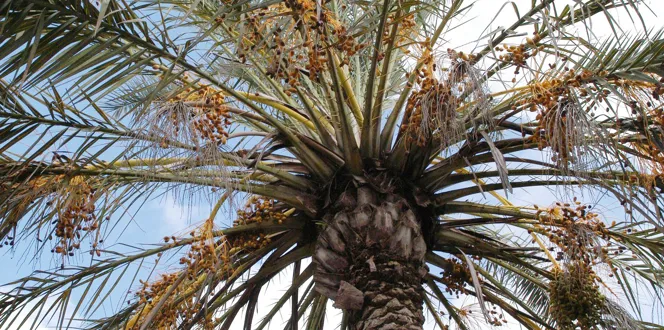When looking at your oak tree leaves, you want to see that classic lobed shape in a nice shiny green shade.
You certainly don’t want to see what looks like brown or beige circular splotches that make your tree leaves look stained or watermarked. This can make your whole, grand oak tree look a bit bare and brown.
Oak trees, in fact, can live for hundreds of years, so you want to make sure they have a long, healthy life in your home landscape.
Let’s look at this oak tree ailment, what causes tubakia leaf spot, and how to treat tubakia leaf spot on oak so you can take care of your trees and learn how to better protect.
What Is Tubakia Leaf Spot?
Tubakia leaf spot is a fungal disease that impacts oak trees – black, red, and pin oak trees, as well as other oaks and even some maples and elms.
Tubakia Leaf Spot Signs & Symptoms
Tubakia leaf spot on oak can start with small, water-soaked areas that turn brown or black. Other symptoms include:
- ¼-inch to ½-inch diameter leaf spots that are reddish-brown to black.
- Spots can fuse into each other, forming larger, irregular blotches.
- Spots can form on leaf veins, and as veins die, more of the leaf tissue will turn brown.
- As the disease becomes more severe, you might see some early defoliation of your oak trees.
The fungus overwinters in fallen leaves and sticks, and wind and rain spreads it in spring. But disease symptoms don’t appear until mid-to-late summer. In fact, by the time you see severe symptoms, it could be when deciduous trees drop their leaves anyway, so tubakia leaf spot could be a tough disease to correctly identify.
Commonly Confused With Anthracnose
Tubakia leaf spot on oak is often confused with oak anthracnose.
One way to tell them apart is the timing of leaf spots. Anthracnose leaf blemishes will usually appear much earlier in the year in late spring. Another way is that anthracnose may cause leaf deformities.
Susceptible Tree Species
As you watch out for tubakia leaf spot, a good way to eliminate it as a cause of the leaf blemishes you’re seeing on your tree is to check the species.
This fungus can impact the following tree varieties:
- Oak trees – black, red, and pin oaks are most susceptible, but other oaks are also vulnerable
- Maple
- Hickory
- Chestnut
- Redbud
- Ash
- Elm
Tubakia Leaf Spot Control
Fortunately, tubakia leaf spot is mostly a cosmetic disease.
You can remove and discard fallen leaves to remove the tubakia fungus from your yard. This is particularly important to do before spring or early in spring to avoid disease spread.
While tubakia leaf spot fungicide is often unnecessary, some fungicides are labeled for use against it and should be applied by a professional licensed arborist early in the season. They will ensure the proper application timing and frequency to prevent disease spread.
Since tubakia leaf spots can impact stressed, weak trees more than healthy trees, keeping good care of your trees can help prevent the spread and severity of this disease. This includes proper watering and fertilization.





